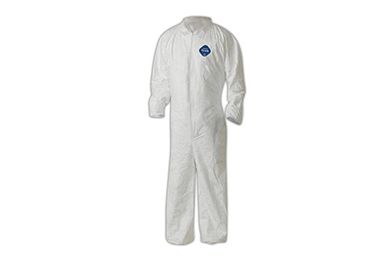Much of our protective clothing is manufactured from Polypropylene or Polyolefin (Tyvek). Polyolefin has a unique structure. Millions of continuous polyolefinfibers are forming a very thick layer which functions as a barrier. This makes polyolefin an efficient protector against particels. Because of the chemical and biological inert nature of polyolefin, the physical characteristics aren’t affected by the organic and inorganic substances, including salts, acids, and bases. The clothes made of polyolefin protects people against the effects of products, and vice versa.
The characteristics of polyolefin:
- Checmical/biological inert;
- Hydrophobic;
- Anti-static;
- Sterilizable;
- Tear-proof.
Polyolefin can be used for:
- Overalls;
- Sleeve-protectors;
- Protective caps for the shoes.
Polypropylene, or PP, is a thermal bound fiber, and forms a stern and even membrane. The usage of PP is endless and it’s perfectly suitable for protective clothing in the pharmaceutical-, medical-, and foodindustry. It’s especially pricewise a very interesting resource, when looked at temporary and disposable protective clothing.
When we’re talking about temporary and disposable, we’re talking about the protective clothes for visitors, such as overalls and hairnets. Aside from the clothes, it’s perfectly suitable for as basic material for other protective uses.














